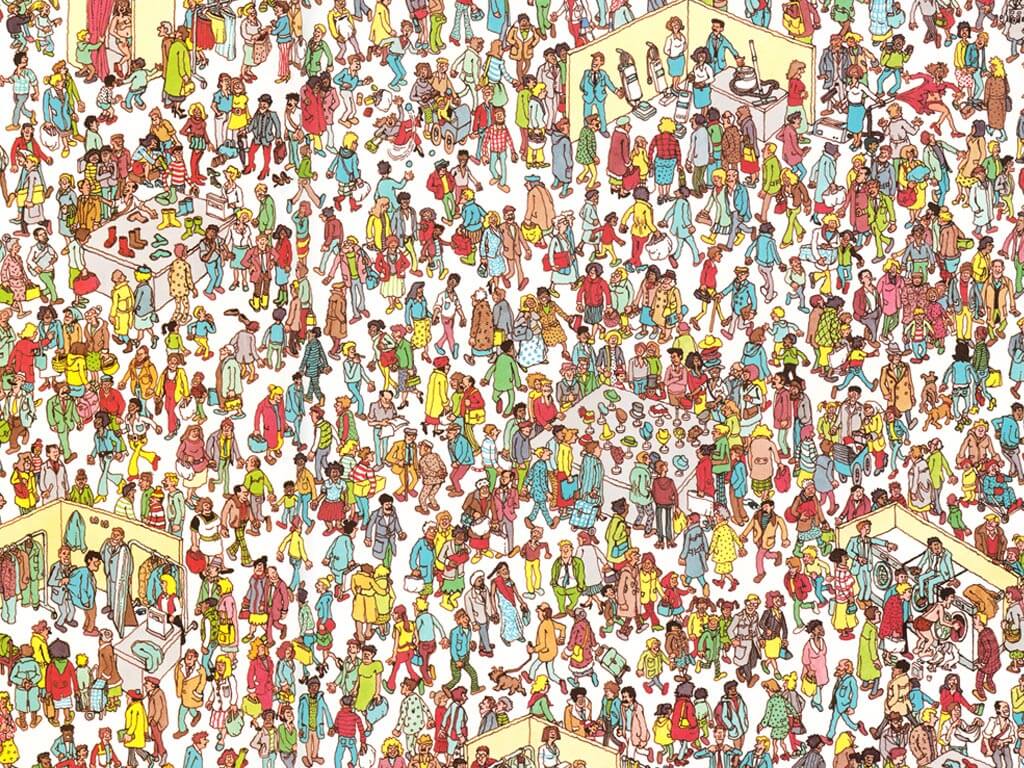Several studies have studied how certain advertisements affect human attention and memory.
A 2009 survey in the United States examined its impact on memory and the vital role this process can play, clearly recalling which brand belongs to the ad that has had the most impact, in turn, there are already a number of neurological studies that are beginning to clarify how we visually process information on websites and the role that advertising plays in the online world.
- In this article we will show the practical applications that advertisers and web designers use to capture our attention and memory.
- As well as our interest.
A clear example to understand all this would be the classic game from the book “Where’s Wally?”
Where’s Wally? It is a well-known game and a practical visual attention exercise. Created by Martin Hanford, this game has appeared in several books, video games, a cartoon series and even in a film.
Wally is a boy with red and white glasses, hat and blouse who hides from countless distractions, making it difficult to find.
Leaving aside the shallowest details, let’s think: how long does it take us to find a different element in a visually busy or messy environment?
This was the question decided by researcher Robert Desimone, director of the McGovern Institute for Brain Research, and Don Berkey, professor of neuroscience at MIT; in fact, they wanted to explore two different schools of thought:
Does our attention travel the page like a scanner, neatly and looking inch by inch?
Or, on the contrary, do we scan the image as a whole, looking for clues in the general pattern of where Wally might be?
The answer seems to be both. And the reason is that both systems are active and come from our evolutionary past. We need to focus our attention on the task at hand, but we also need to analyze the environment so as not to forget something that may suddenly require attention.
And the way the brain does this is fascinating. It does this by literally creating a set of neurons, all pulling in a synchronized pattern. It seems that this synchronization represents the concentration of our attention.
Returning to Wally, neurons tend to have specialized functions. We have neurons that are better at choosing colors, others that identify shapes, and others that sound and identify patterns.
In Wally’s case, before you start scanning the page, the most suitable neurons are selected to recognize Wally’s unique image. For example, since Wally is dressed in red, we select red neurons. Thus, an image of Wally is created in “the eye of the mind”.
So, Detective Neuron? is ready to intercept Wally
But how can we really find Wally? This is where the two brain mechanisms work in uniesonuming.
To better understand them, let’s explain the difference between foveal and peripheral care:
Fovea attention is where the brain focuses on the eyes, allowing it to identify fine data. When we read, for example, we use the f-veo approach to identify the shape of the letters and interpret them. Eye tracking only catches the focus of the forvea. This is the “attention center” function.
However, the brain should tell where the eyes should move next. To do this, it depends on peripheral care. This is what we see from the “corner of the eye”.
Peripheral care allows to scan a much wider field of view, its objective is to determine if there are elements in this area that deserve the reorientation of the attention of the forvea. impact on the effectiveness of advertising.
So imagine that your neural team has already identified the model you’re looking for. This image is implanted in your prefrontal cortex.
With peripheral vision, start scanning the entire image to find possible matches. To help separate the most promising areas of the image from background noise to detail, an area of the prefrontal cortex organizes its neurons to synchronize and capture details.
This process also serves to capture characteristic sounds among a lot of noise. For example, in a crowded square, watch out for a musician playing at the other ends of the room.
Therefore, your fovent attention focuses on the parts of the image where Wally is most likely to be located, this is where a more detailed analysis comes in to determine if Wally is actually present.
This same basic theory occurs when we visit a website
By: Bethlehem Gisbert Vercher

